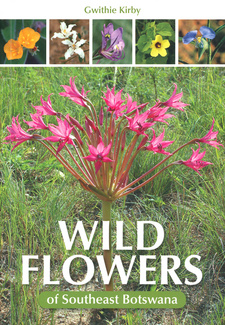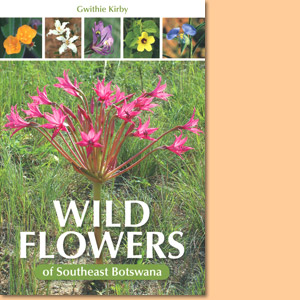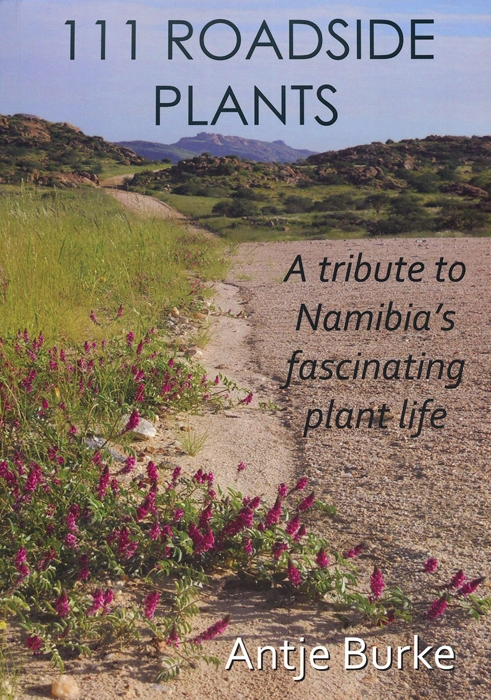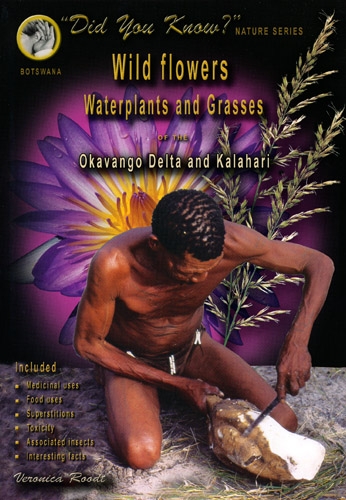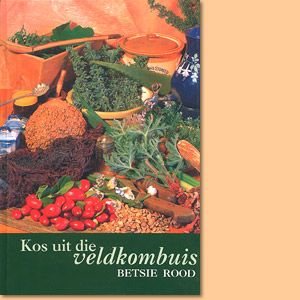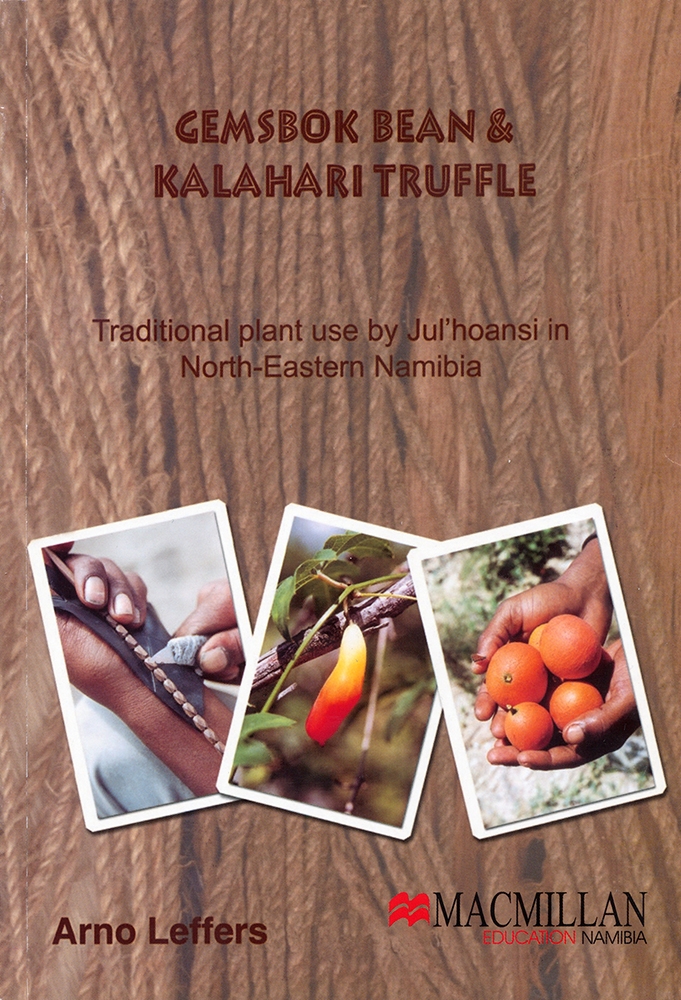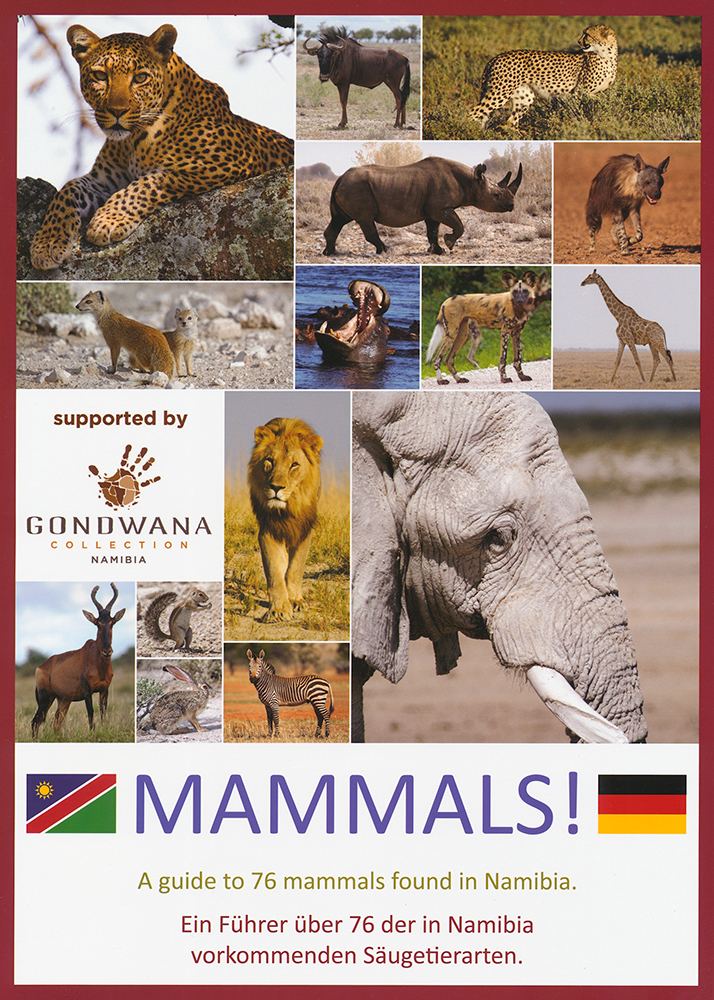Wild Flowers of Southeast Botswana, by Gwithie Kirby
Gwithie Kirby has a lifelong love of wild flowers, which has led to her researching and writing this flower book, Wild Flowers of Southeast Botswana.
How to use Wild Flowers of Southeast Botswana
The flowers featured in this guide are the more common and most likely to be seen species occurring in the southeastern region of Botswana, an area surrounding Gaborone and depicted as 'core area' on the map that appears on the inside covers of this book. Many of these species grow well beyond this core and can also be found in the region labelled 'area of interest', which extends into central Botswana and parts of South Africa (Northern Cape, North West, Limpopo and Gauteng provinces). The 332 flowers included were chosen from Moffat Setshogo's Preliminary Checklist of the Plants of Botswana and from A List of the Flowering Plants of Botswana in the Herbaria at the National Museum, Sebele and University of Botswana 1986 compiled by J.E. Barnes and L.M. Turton. Some of the more common alien species are also included and shown by means of an asterisk before the name of the plant, e.g. *Catharanthus roseus. Information on the life cycle, life form and height of plants is taken from Plants of Southern Africa: an annotated checklist, G. Germishuizen & N.L. Meyer (Eds). Some of the family descriptions are based on those in Wild Flowers of the Limpopo Valley by Retha van der Walt. The quick flower guide that follows overleaf serves as a useful reference to each species Included in this book. The thumbnail images are grouped in colour bands in line with the colour coding used within the book and guide you to the page on which you find the full entry. The wild flowers in this book have been grouped into nine main colour sections based on the predominant colour of the flower (or what appears to the lay person to be the flower). A quick visual guide to all the flowers in each group is provided overleaf and will help you to locate the species quickly. Within each colour section, flowers are grouped in their families (family names appear with the page number at the bottom of each page) and in alphabetic order, according to the species name. For each plant entry, the species name at the top of each page is followed in a smaller font by the author citation: the name(s) of the author(s) who first validly published the scientific name. These names (often abbreviated) are provided for reference purposes and to avoid ambiguity; they do not form part of the scientific name. In some cases, subspecies (subsp.) or variety (var.) names are also supplied. These are genetically distinct forms of the species. For a few entries, one or more additional scientific names (with their author citation) are given in brackets. These names are so-called synonyms, usually names by which plants were previously known. When searching the literature (especially older publications) or the internet for a particular wild flower, it is advisable to look under any synonyms as well. On the far right of the author citation, one or more icons convey, at a glance, important features of the plant. Icons are explained on the inside covers of the book. Below the species name, English and Setswana common names are given. Occasionally, Setswana names appear in square brackets, e.g. [sephalabanya]. This signifies common names as supplied by traditional healers, but not verified by Prof. Desmond Cole. Below this, the origins and meaning of the species name are provided. Simple leaf drawings below the icons depict the leaf shape. Descriptions of each plant, its leaves, flowers and fruit accompany the one or more colour Photographs, and a box labelled 'Notes' presents additional interesting information, mostly on the uses, traditional and other, of the plants. Illustrated (pages 378-379) and descriptive (pages 380-385) glossaries explain the more technical terms used in the book. (...)
This is an excerpt from the book: Wild Flowers of Southeast Botswana, by Gwithie Kirby.
Title: Wild Flowers of Southeast Botswana
Author: Gwithie Kirby
Publisher: Random House Struik
Imprint: Nature
Cape Town, South Africa 2013
ISBN 9781775840336 / ISBN 978-1-77584-033-6
Softcover, 15x21 cm, 400 pages, throughout colour photos, images, 1 map sketch
Kirby, Gwithie im Namibiana-Buchangebot
Wild Flowers of Southeast Botswana
Wild Flowers of Southeast Botswana features 332 of the most common wild flower species occurring in the region.
Weitere Buchempfehlungen
111 Roadside plants. A tribute to Namibia's fascinating plant life
111 Roadside plants. A tribute to Namibia's fascinating plant life will provide plant lovers with ample more reasons to get excited about Namibia's flora.
Wild flowers, waterplants and grasses of the Okavango Delta and Kalahari
Includes all the common herbaceous (nonwoody) plants, wild flowers, waterplants and grasses of the Okavango Delta, Chobe, Makgadikgadi pans and the Kalahari.
Kos uit die veldkombuis
Kos uit die veldkombuis bestaan uit ’n omvattende versameling kleurfoto’s, beskrywings en resepte van eetbare plante wat in Suid-Afrika voorkom.
Gemsbok Bean & Kalahari Truffle: Traditional plant use by Jul'hoansi in North-Eastern Namibia
Gemsbok Bean & Kalahari Truffle introduces to the traditional plant use by Jul'hoansi in North-Eastern Namibia.
Mammals! 76 Säugetiere Namibias
Mammals! Ein Tierführer für 76 der in Namibia vorkommenden Säugetierarten.

